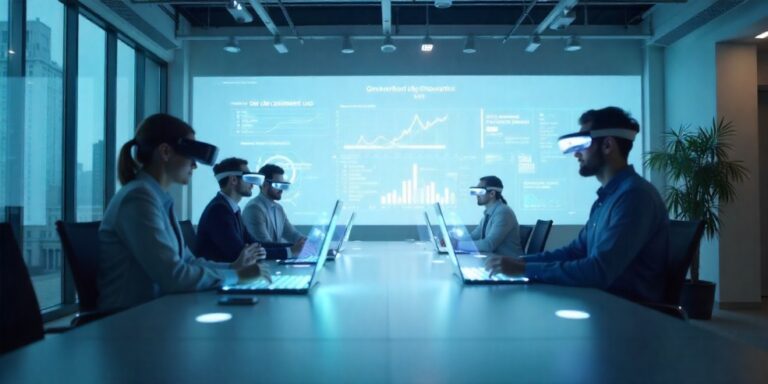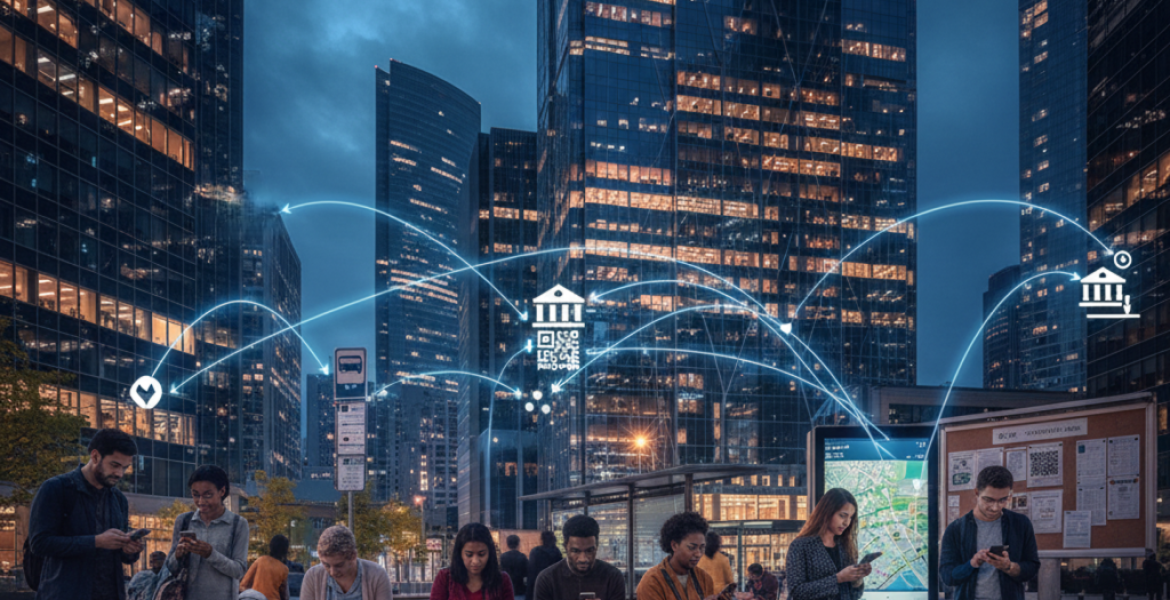

Local government mobile apps are rapidly becoming a cornerstone of modern civic engagement and local government digital transformation. In an era where digital government solutions are expected, cities that adopt mobile apps meet today’s citizen expectations for convenience, transparency, and speed. By 2025, agencies across the country are updating their services to be mobile-friendly as part of broader application modernization trends 2025. In short, local governments need to “go mobile” to stay relevant, efficient, and trusted.
Almost everyone carries a smartphone these days. In fact, 98% of Americans own a cellphone and 91% own a smartphone. Local government mobile apps tap into this near universal access, letting municipalities meet residents on devices they already use daily. In other words, mobile apps for digital government are no longer a luxury they’re where citizens already are. By offering services in app form (e.g. utility payments, service requests, event calendars), cities ensure no one is left behind by the digital divide.
Studies show that a decisive majority of residents want mobile access to city services. In fact, one survey found 70% of citizens prefer to interact with local government via a mobile app. Today’s smart city mobile apps are designed with everyday convenience in mind they can link news, permits, alerts and payments in one place. By offering the mobile services people want, cities demonstrate that they’re listening to constituents’ needs.
Citizens now expect government services to be as seamless as online shoppinggocivix.com. When local governments deliver on this expectation, satisfaction soars. For example, one study reported a 72% jump in resident satisfaction after a city launched a well-designed mobile app. Easy, mobile-friendly access to information and services makes residents feel heard and helped. In short, investing in apps and other digital government solutions pays off immediately in happier constituents.
Mobile apps streamline internal processes and speed up response times. One report found cities using apps for citizen service requests cut response times by 25%. When a resident snaps a photo of a pothole or checks an app for garbage pickup updates, the city can act faster than with paper forms or phone calls. Integrating an app into existing local government software accelerates workflows fewer handoffs and faster data entry mean quicker fixes for residents. This efficiency boost also extends to field workers and 311 centers, so the same tax dollars deliver better service.
You don’t have to build an app from scratch. Many cities leverage established digital government solutions and partner with specialized government app developers. These experts know how to plug a mobile interface into back-end systems securely. Modern mobile apps often integrate things like maps and service databases for example, connecting to a city’s Geographic Information Solutions (GIS) to map reported issues. In fact, industry experts note that mobile apps for digital government transformation “facilitate better information sharing, reporting, and response”. By using tried-and-true frameworks and experienced developers, municipalities launch robust, feature-rich apps far faster than starting a blank project.
Going mobile can actually reduce operational costs. The same study that found faster response times also reported a 32% drop in administrative costs after app adoption. Automating simple tasks like updating a permit status or handling bill payments in-app cuts paper, postage, and staff time. Over time, those savings free up budget for other city priorities. In short, a smart mobile app pays for itself by slashing paperwork and manual processes.
Mobile apps extend services to groups who otherwise have limited internet access. Remarkably, 64% of low-income Americans own a smartphone often their only way to get online. By delivering city services via mobile apps and notifications, governments ensure that everyone regardless of income can pay bills, check alerts, and request help. This inclusive approach closes the digital divide by putting the same services on every resident’s pocket computer, smartphone.
Apps let cities communicate instantly with residents. Through push notifications which enjoy very high read rates, governments can blast emergency alerts, weather warnings, or event updates directly to phones. Residents can also use the app’s GPS and camera to report problems: snapping a photo of a downed tree or broken streetlight submits the exact location to public works. This real-time loop alerts to citizens and feedback to the city wouldn’t be possible with old methods. By combining maps and notifications, mobile tools help cities act faster and keep everyone safe.
Today’s city apps bundle many services into one place. For example, Auburn, WA’s city app lets users report potholes or graffiti and pay utility bills or register for recreation programs all from the same interface. Residents can track permit applications, receive email updates, and contact city staff without dialing any numbers. This convenience means fewer in-person trips to city hall or calls to different departments. In practice, it turns the app into a virtual city hall: citizens handle routine tasks on their own schedule, and staff can manage these requests more efficiently.
Don’t fall for the myth that only the young use apps. In fact, 60% of seniors (65+) regularly use mobile apps, and nearly all younger adults do. Both young professionals and retirees appreciate the convenience of checking schedules, renewing permits, or reporting issues via an app. By offering a polished app interface, cities serve every generation from tech savvy teens to older residents who prefer tapping an icon to waiting on hold. In other words, local government mobile apps meet people of all ages where they are.
Mobile apps are at the heart of smart city initiatives. One technology analysis notes that apps serve as digital interfaces allowing citizens to interact directly with city systems, making urban life more connected and efficient. Smart city mobile apps can tie into IoT sensors, traffic systems, and public dashboards. For instance, an app might show live transit data, city parking availability, or environmental sensor readings. All this integration means local governments can use Geographic Information Solutions and real-time data to optimize services and residents get a transparent, interactive map of city life. Essentially, mobile apps make all the pieces of the smart city puzzle fit together.
Going mobile shrinks your city’s carbon footprint. Every form and notice that moves online saves paper, ink, and trips. Studies show that switching to digital workflows can cut processing times by up to 80% and dramatically reduce paper use. For example, instead of printing and mailing a building permit form, a mobile app version delivers data instantly. This aligns with many cities’ sustainability goals less waste and lower emissions. In short, mobile apps help make city hall not just more efficient, but more environmentally friendly.
Mobile apps improve staff productivity, not just citizen service. When public works crews, inspectors, or 311 operators use the app for on the job tasks, efficiency skyrockets. In fact, one report found governments saw a 75% jump in internal staff efficiency after adopting apps for communication and task management. Field workers can view assignments, upload reports, and update issue statuses in real time no more chasing paperwork. This frees up employees to focus on complex problems while routine updates happen via the app. A well integrated app thus becomes a force-multiplier for city staff.
A modern mobile app signals that a city is forward-thinking. Tech companies and investors take notice of cities that embrace innovation. By streamlining permits, licenses, and information into easy app experiences, cities create a business-friendly environment. Over time, this can attract startups, events, and talent who value efficiency and digital engagement. In other words, a city that’s easy to navigate via an app is also easy to do business in. Offering top-notch mobile services thus helps the city’s economy, not just its residents. This also ties back into broader application modernization trends 2025 cities that modernize now will be more competitive tomorrow.
Embracing mobile apps aligns with the industry’s application modernization trends. Analysts note that by 2025, updating legacy systems to cloud-native, mobile-first platforms is a critical priority. Modern mobile apps use scalable architectures and current security standards, so the city isn’t stuck on outdated tech. In practice, this means replacing siloed databases and paper forms with agile, integrated platforms. By getting ahead of application modernization trends 2025, cities avoid costly upgrades later and ensure their services keep up with 21st-century expectations. Adopting mobile apps today is a smart step toward the fully digital, resilient local government of tomorrow.
Mobile apps for local government are crucial for enhancing citizen involvement and modernising services. Municipalities may now meet residents where they are on their phones thanks to mobile apps, which are accessible to almost everyone. Mobile services are in high demand from the public, and applications increase satisfaction by offering quicker, more effective services. With real time warnings and one stop self service, they also enhance communication and reduce operating expenses.
In today’s digital first world, cities may connect underserved groups, streamline procedures, and maintain their competitiveness by implementing mobile technology. With ISO 9001 and ISO 27001 certifications, App Maisters assists governments in staying ahead of the curve in digital transformation. To begin your mobile transformation journey, get in touch with us right now.
Mobile apps boost public satisfaction, speed up services, and reduce costs. They’re a key step in local government digital transformation and help meet modern citizen expectations.
Smart city mobile apps connect residents to real-time services like traffic updates, alerts, and digital reporting. They improve city responsiveness and support connected infrastructure.
Companies like App Maisters, a certified government app developer, specialize in building secure, user-friendly mobile apps tailored for local governments and public sector needs.
Yes. Mobile apps are a core element of digital government solutions, helping local agencies modernize how they engage with residents, manage data, and deliver services.
Absolutely. By automating requests and self-service options, local government mobile apps reduce call volumes and paperwork, freeing up staff for more critical tasks.
App Maisters offers HIPAA- and ISO-certified development, deep public sector experience, and a strong track record in application modernization trends 2025 and beyond.
Mobile apps send real-time alerts, updates, and safety instructions instantly ensuring communities stay informed during emergencies or critical events.
Costs vary, but App Maisters delivers scalable solutions that fit your budget. We help reduce long-term expenses through automation and improved operational efficiency.
Commodo elementum, sed imperdiet nunc euismod etiam aliquet viverra

App Maisters Inc is a Federal Government SBA 8(a) Certified and Texas Hub Certified company. We are a leading developer of high-performance mobile apps, websites, and enterprise solutions, that are specially designed to meet Federal, State, Local government agencies and higher education needs.
